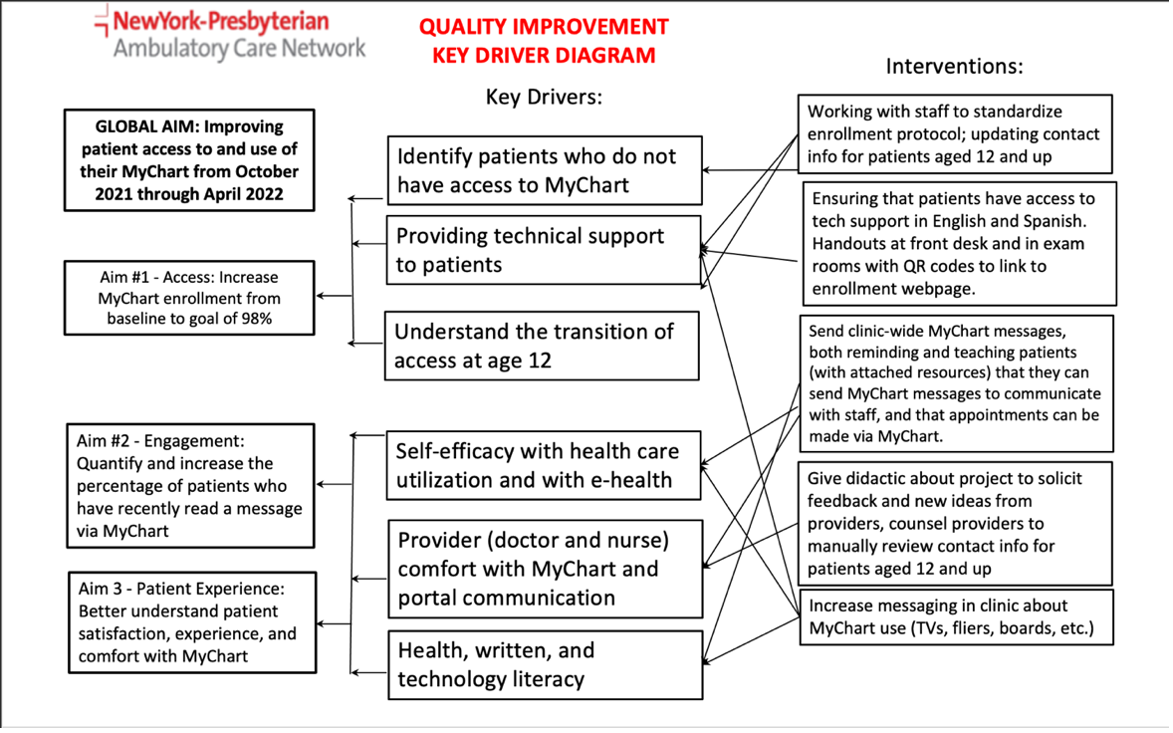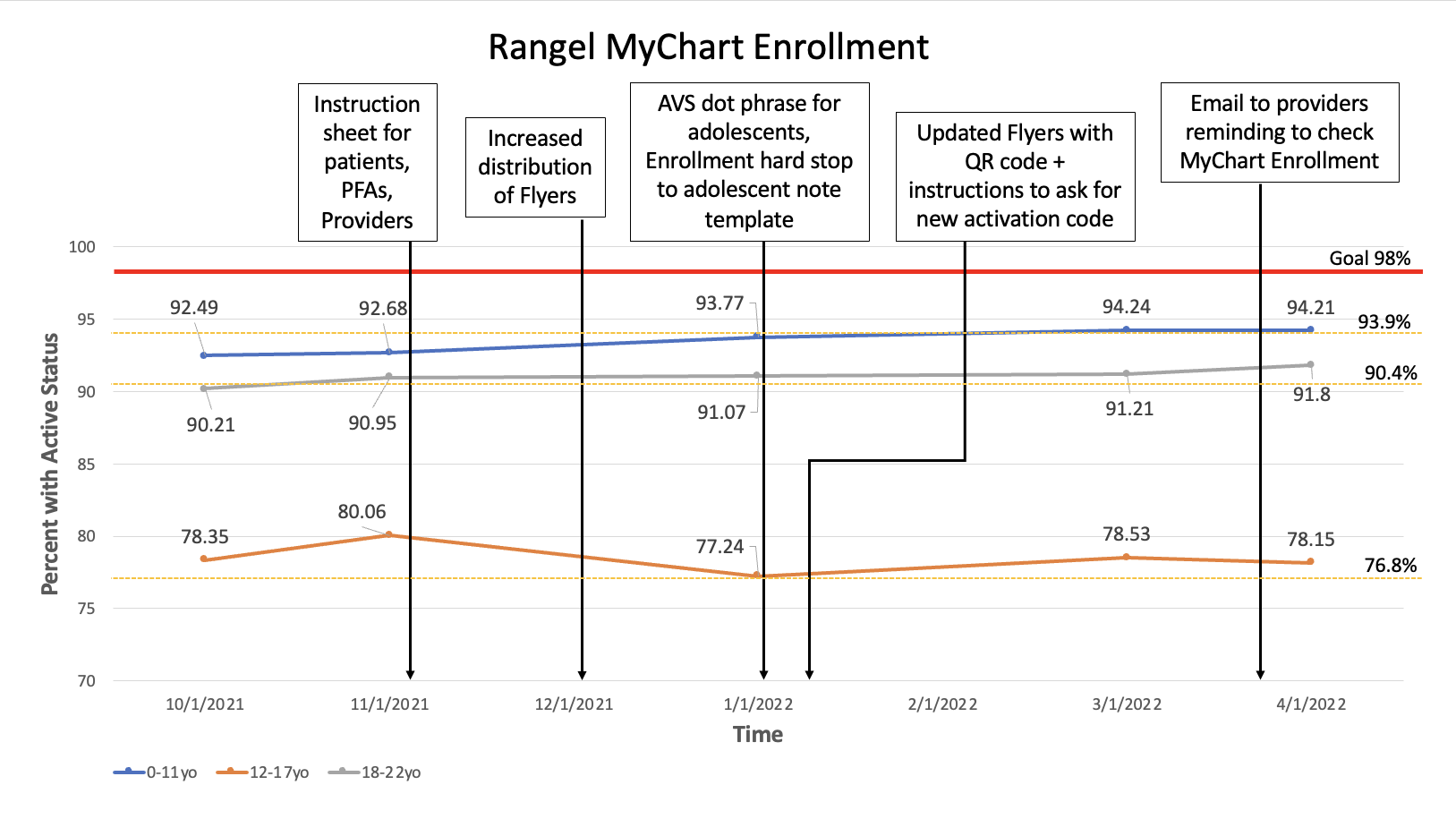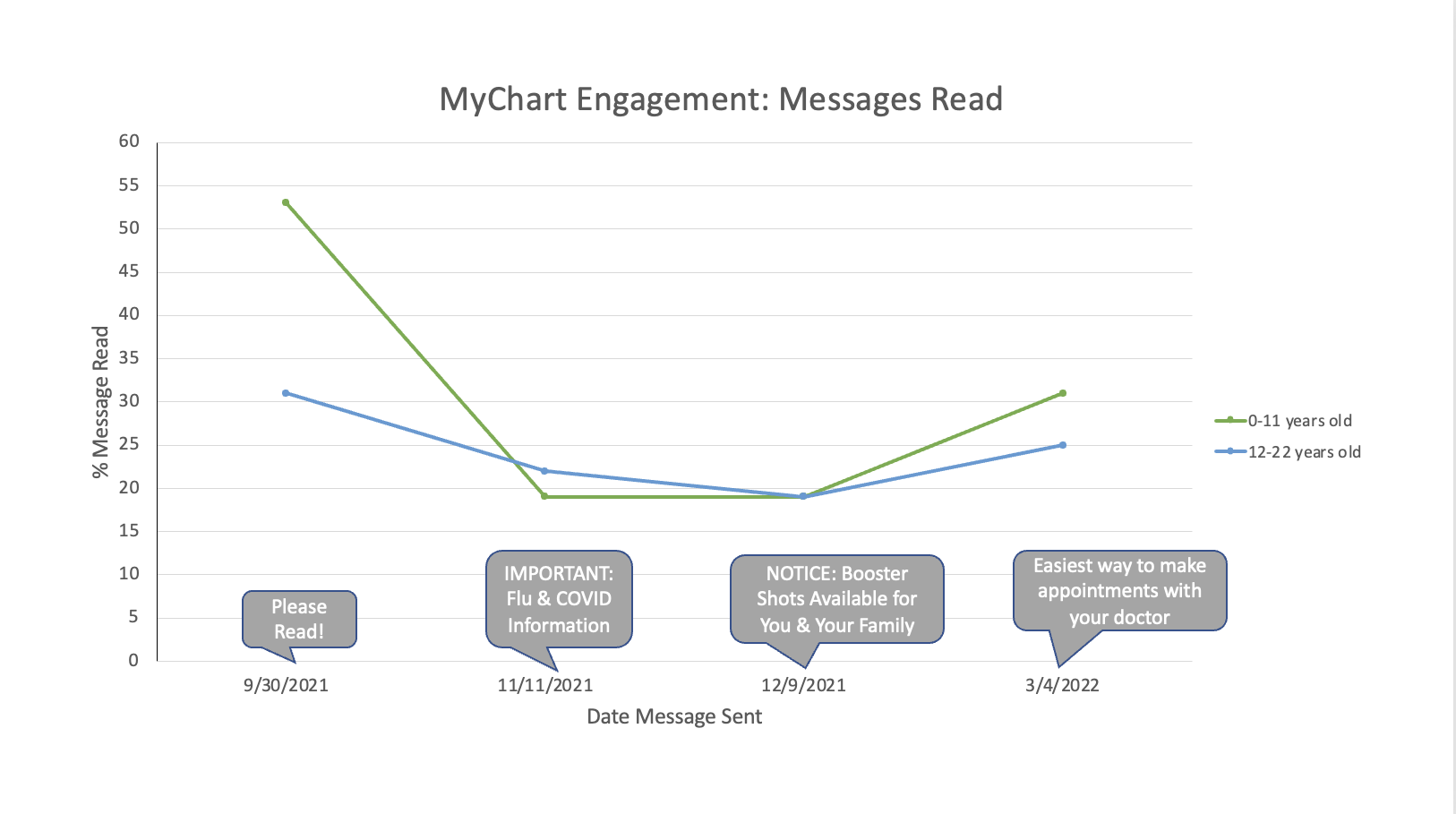Quality Improvement/Patient Safety: Primary & Subspecialty Outpatient Quality Improvement
QI 2: Screening in Primary Care
695 - Improving MyChart Access and Engagement: A Resident Quality Improvement Initiative
Publication Number: 695.152

Berni Schor, MD (she/her/hers)
Pediatric Resident
NewYork-Presbyterian Morgan Stanley Children's Hospital
New York, New York, United States
Presenting Author(s)
Background:
MyChart is an online platform aimed at improving patients’ engagement in and utilization of healthcare via online scheduling, messaging providers, reviewing health information, and participating in telemedicine. Health portals are a critical aspect of healthcare due to the rise of telehealth visits and new laws regarding information blocking.
Objective:
In an urban pediatric primary care practice, this resident-led quality improvement project sought to increase MyChart enrollment to 98%, quantify and improve engagement with MyChart, and improve the overall e-Health patient experiences (Figure 1).
Design/Methods:
To increase MyChart enrollment, a process measure, iterative Plan-Do-Study-Act cycles were carried out: training staff on facilitating enrollment, distributing QR codes and flyers for self-enrollment; incorporating reminders for enrolling adolescents into note templates. Outcomes including percent enrolled and reasons for non-enrollment were obtained from the medical record monthly for three different age groups (0-11 years, 12-17 years, 18-22 years) (Figure 2). For patient engagement, also a process measure, medically relevant and timely messages to patients and caregivers were sent over a seven-month span. Percent of read messages were collected at baseline, and monthly thereafter (Figure 3). Patients and caregivers were also provided with surveys to assess satisfaction and utility of MyChart.
Results:
Patients 0-11 years old had the highest enrollment increase over the project period (92.49% to 93.9%). Enrollment of the 12-17 year age group increased from 90.21% to 91.8%, while there was no increase for the 18-22 year age group (78.35% to 78.15%). The most common reason for non-enrollment was an expired activation code, although the percent of expired codes decreased over the course of the project. Percent of messages read decreased initially and then increased slightly (Figure 3). Surveys revealed that caregivers were grateful for MyChart due to greater efficiency, reduced wait times, and ease of access.
Conclusion(s):
This resident-led QI study utilized staff, provider and self-enrollment as well as personalized messaging to increase patient engagement with the medical record. However, there are still barriers to improving MyChart utilization, especially in the area of engagement once enrolled. Despite targeted efforts to include adolescents, this age group remained the most difficult to engage. Future efforts should look to standardize these practices and create targeted interventions to overcome identified barriers in light of patients’ satisfaction with this service. 


